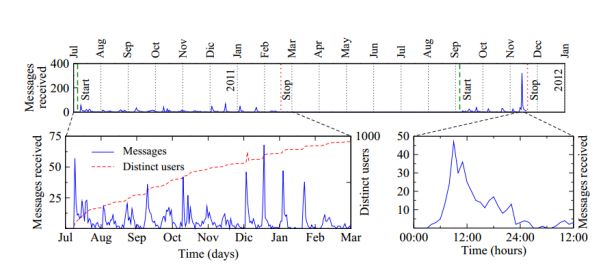The power of social media is a huge thing, especially when you’re able to convince millions of followers just what you’re capable of in a small time frame. That’s what happened a few years ago, when a “spambot” created by a tech team became a powerhouse in an Italian social network.
In 2009, Luca Maria Aiello and her colleagues at the University of Turin in Italy based a study on a social network called aNobil.com, which allows people to exchange opinions and other details about the books they enjoy.
For the experiment, Aiello’s team created an automated crawler that visits a person’s profile on the network, and then all of the people that connect to this particular profile as well. It would then visit each of the people that links through said nodes, continuing to build a map of the network in the process.
The name of the account used for the experiment was called lajello, and it was finally put to work in September 2009, with a simple mission to map out the network.
In July 2010, aNobil.com changed its default user settings so that users could see everyone who visited their site. “As a result, our crawler left a trace of its passage in all the profiles reached approximately twice a month,” said Aiello.
As a result, people followed lajello’s progress, creating a new idea for Aiello in the process. “The unexpected reactions the bot caused by its visits motivated us to set up a social experiment in two parts to answer the question: can an individual with no trust gain popularity and influence?” she explained.
Granted, it would be on a visitation basis only, with lajello only tracking visits to the profile’s node. As a result, though, it began to build a huge social following, with a number of comments on the general wall. When lajello stopped, so did they — but they picked right up again when it returned, creating a social phenomenon in the process.

Once 2011 had come and gone, lajello’s profile stood tall as one of the most popular profiles on the network, with more than 66,000 visits and over 2,000 messages from over 1,200 different users.
“Our experiment gives strong support to the thesis that popularity can be gained just with continuous ‘social probing'” concludes Aiello. “We have shown that a very simple spambot can attract great interest even without emulating any aspects of typical human behavior.”
The experiment continued, this time with the bot capable of sending recommendations to users who connect with it. The results definitely picked up even further. “Among the 361 users who created at least one social connection in the 36 hours after the recommendation, 52 per cent followed suggestion given by the bot,” said Aiello on the team’s behalf.
“In other words, lajello has a greater persuasive power over those who are more aware of its presence and activity,” she said, pointing out that targeted recommendations given to followers had a greater effectiveness.
It’s interesting to see how effective it was… and what marketers could possibly learn from it.
Source: Technology Review

